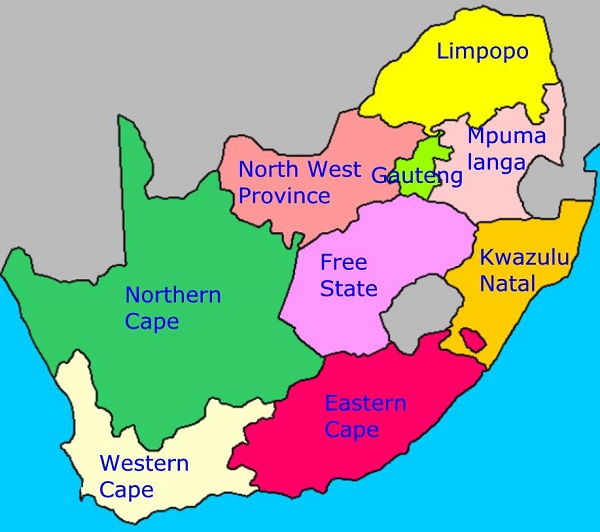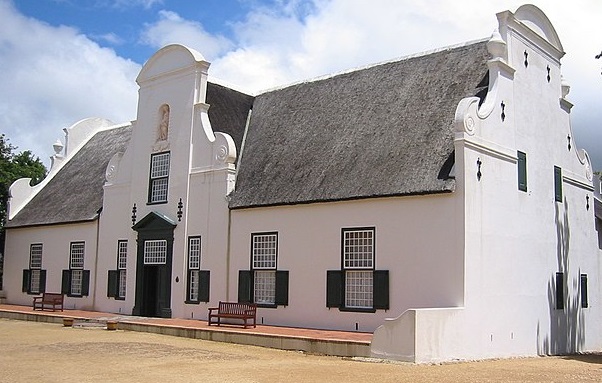South African Grape Plantings
Chenin Blanc Colombard Cabernet Sauvignon Syrah Sauvignon Blanc Sultana Chardonnay Pinotage MerlotSource: OIV Note de conjoncture mondiale 2021
South African Wine Making
Sustainable and Organic Farming
Increasing focus on sustainable and organic practices to preserve the environment and produce healthier grapes.
Old Vines
Utilization of old vine vineyards, particularly for Chenin Blanc, which produce lower yields but more concentrated and complex flavors.
Innovative Techniques
Use of modern technology and traditional methods, such as natural fermentation and minimal intervention, to enhance the expression of terroir.
Skillfull Blending
Skillful blending of different grape varieties to create complex and balanced wines, a common practice especially for red wines.
South African WO
From 1973, the WO (Wine of Origin) program defines the Wine Regions of South Africa.
The WO system was drafted after the French AOC (Appellation d'Origine Contrôlée) system, but consentrated about regions, not about grape varieties and production methods.
A Ward is more equivalent to the French AOC. It defines small areas (terroirs) with a distinctive soil type or climate.

Geographical units are divided into regions.
Regions are divided into districts (Stellenbosch, Paal, Swartsland).
Districts can contain distinct areas called Wards.
Only districts with registrated Wards are listed.
| Geographical | Wo Regions | Quality Districts |
|---|---|---|
| Western Cape | Cape South Coast | Cape Agulhas Overberg Swellendam Walker Bay |
| Coastal Region | Cape Town Darling Paarl Stellenbosh Swartland Wellington |
|
| Breede River Valley | Breedekloof Robertson Worcester |
|
| Klein Karoo | ||
| Olifants River | Citrusdal Mountain | |
| Northern Cape | None | Douglas Southerland-Karoo |
| Eastern Cape | None | None |
| KwaZulu-Natal | None | Central Drakenberg Lions River |
| Limpopo | None | None |
South African Grapes and Wines
| Chenin Blanc | South Africa's signature white grape. Chenin Blanc produces wines from dry to sweet, and even sparkling. Predominantly grown in Stellenbosch, Swartland, and Paarl. |
|---|---|
| Sauvignon Blanc | Crisp acidity and vibrant flavors of green apple, lime, and tropical fruits. Notable regions: Durbanville and Elgin. |
| Chardonnay | Often oaked, producing rich and creamy wines with notes of butter, vanilla, and tropical fruits. Stellenbosch and Robertson produces high-quality Chardonnays. |
| Cabernet Sauvignon | The most plated black variety. Full-bodied wines with dark fruit flavors, tannins, and aging potential. Used in Bordeaux style blends with Merlot and Cabernet Franc. Stellenbosch is particularly famous for its Cabernet Sauvignon. |
| Shiraz / Syrah | In South Africa, Syrah is predominately known as Shiraz. Syrah is used for "Rhône-style" wines. In hot climates Shiraz produces high in alcohol, full-bodied reds, known for its spicy and bold flavors, with notes of dark berries, pepper, and smoked meat. Swartland and Stellenbosch are key regions. |
| Merlot | Typically soft and fruityr, with flavors of plums, black cherries, and herbs. Commonly blended with other varieties. Commonly found in Stellenbosch and Paarl. |
| Pinotage | Unique South African grape. A cross between Pinot Noir and Cinsault. Known for its bold flavors of dark fruit, smoke, and earth. Widely grown in Stellenbosch, Paarl, and Swartland. |
| Pinot Noir | Only planted in in the coolest areas. Most often matured in oak. |
The Coastal Region
The Coastal Region contains the following districts:
Stellenbosh (12 200 hectares)Swartland & Darling (12 200 hectares)
Paarl (9 800 hectares)
Wellington (2 500 hectares)
Cape Town (2 600 hectares)
Stellenbosch
Stellenbosch, "The Home of South African Wine", is located a few kilometer east of Cape Town.
It is South Africa's second-oldest settlement after Cape Town, and one of the oldest and most renowned wine regions in South Africa, with winemaking traditions since the 17th-century.

Named after the Governor Simon van der Stel, Stellenbosh was established on the banks of the Eerste River in 1679. French Huguenots arriving in the Cape found their way to Stellenbosch in the 1690s and began to plant vines.
(Simon van der Stel also established the wine estate of Constantia in Cape Town.)
Stellenbosh is best known for its red wines, particularly Cabernet Sauvignon, Merlot, Bordeaux Blends, Shiraz and Cap Red Blends.
The mountainous terrain, cooling winds from False Bay, good rainfall in the winter, not too hot summers, deep well-drained soils (granite and sandstone) and a diversity of terroirs, create good conditions for various grape varieties.
Black Grapes | White Grapes |

20% Cabernet Sauvignon |

13% Sauvignon Blanc |
Terroir | Climate |

Diversity of Terroirs |

Mediterranean Climate |
Paarl
The Paarl District is located a few kilometer north of Stellenbosch.

Paarl is one of South Africa's most renowned wine regions, with a history of viticulture dating back to 1688 when the French Huguenots were granted land to farm in the Drakenstein area.
The district produces a wide range of wines, from robust reds to elegant whites.
Paarl Wards
- Simonsberg-Paarl
- Agter-Paarl
- Voor Paardeberg
Black Grapes | White Grapes |

15% Cabernet Sauvignon |

19% Chenin Blanc |
Terroir | Climate |
|
Granite. |

Mediterranean Climate |
Wellington
Wellington is located in the Coastal Region a just few kilometer north-east of Cape Town.
The region is especially known for cultivating outstanding Chenin Blanc, Malbec, and Pinotage.
4,500 hectares are dedicated to vineyards, with Chenin Blanc accounting for 22%.
The diverse climate and soil of Wellington allow for the cultivation of numerous other grape varieties, including Cabernet Sauvignon, Shiraz, and Sauvignon Blanc.
Climate
Mediterranean. Hot Summers and Moderate Winters.
Soil
Shale, Sandstone and Granite.
Wellington Wards
Blouvlei
Bovlei
Gronenberg
Limietberg
Mid-Berg River
The Wellington Wine Route
The Wellington wine route is a must-visit for any wine lover. This scenic route takes you through some of the most picturesque vineyards and wine estates in the region.

Black Grapes | White Grapes |

|

|
Cape Town
The Cape Town District is located on the Cape Peninsula.
The district grows a wide range of grapes, but are best known for Sauvignon Blanc.
Cape Town is a cooler district. It is cooled by the Atlantic Ocean from both sides of the peninsula. This creates a long ripening periods, which influences the aromatic profile of the wines.
Good soils, cooling sea breezes, night-time mists and proximity to the Atlantic ocean are beneficial factors when it comes grape quality.

Groot ("Great") Constantia is the oldest wine estate in South Africa and provincial heritage site in the suburb of Constantia in Cape Town.
The Constantia Ward
The Constantia Valley is the oldest winegrowing district in South Africa. It is an historic wine region, famous for sweet wines and Sauvignon Blanc.
The Durbanville Ward
Durbanville has a good reputation for Sauvignon Blanc. With vineyards as high as 380m above the sea level, Durbanville is also attracting attention from Chardonnay, Merlot and Cabernet Sauvignon.
The Philadelphia Ward
Philadelphia also benefits from the cooling Atlantic Ocean. Some of the vineyards are up to 250m above sea level. This gives high day/night temperature differences and results in slower ripening. Philadelphia ward produces some highly regarded Cabernet Sauvignon, Merlot and red blends.
Darling
The Darling District incorporates the Groenekloof ward, which is one of the closest to the cooling Atlantic, is known for an exceptional quality Sauvignon Blanc.

Black Grapes | White Grapes |

16% Cabernet Sauvignon |

36% Sauvignon Blanc |
Terroir | Climate |
|
Sandstone Soil with high concentrations of loam and granite. |

Cooler Region |
Swartland
The Swartland District is located few kilometer east of Cape Town, and a few kilometer north of Paarl.
The district produces top style wines, both red and white.
Swartland is known for its old vine Chenin Blanc and innovative winemaking practices. Many award-winning wines have emerged from Swartland.
Swartland has 3 main soil types: shale/schist, granite, and iron-based soils. Each soil has very different characteristics creating unique growing conditions.
Black Grapes | White Grapes |
|
16% Shiraz |
20% Chenin Blanc |
Terroir | Climate |
|
Shale. Shist. |

Hot and Dry. |
The Brede River Region
The Breede River Valley is responsible for 40% of South Africa's total wine production.
The region is surrounded on three sides by mountain ranges.

The Brede River Region contains the following districts:
Breedekloof (12 772 hectares)
Robertson (12 889 hectares)
Worcester (6379 hectares)
Breedekloof
The Breedekloof District has vineyards on alluvial valley soils resting on a bed of river stones. The district covers most of the Breede River Valley. There are more than 20 wineries on the Breedekloof Wine Route, including the Goudini and Slanghoek wards.
Most-planted grapes: Chenin Blanc, Colombar, Sauvignon Blanc.
Robertson
The Robertson District is best known for Chardonnay and Sparkling wines. The climate is warm and dry. Limestone-rich soils contribute to the minerality of the wines.
Most-planted grapes: Colombar, Chardonnay, Sauvignon Blanc, Chenin Blanc.
Worcester
The Worcester District is the largest in wine district in Sourh Africa. It counts for nearly 20% of the area of all national vineyards. It produces 25% of South Africa’s total volume of wine and spirits and is the most important Brandy producing district in the country.
Most-planted grapes: Chenin Blanc, Colombar.

Black Grapes | White Grapes |
|
7% Cabernet Sauvignon |
19% Chenin Blanc |
Terroir | Climate |
|
On the valley floor: |
Mediterranean. |
Cape South Cost Region
The Cape South Cost Region contains the following districts:
Cape AgulhasElgin
Overberg
Swellendam
Walker Bay
Total area under vine 2023: 2611 hectares (https://topwinesa.com/)
Cape Agulhas
The Cape Agulhas District is famous from its high-quality Sauvignon Blanc and Shiraz wines.
In the Elim ("Place of God") ward, the maritime vineyards are situated near Cape Agulhas at Africa's southernmost point.
Strong, cooling summer winds ensure a cool ripening season, perfect for Sauvignon Blanc, but also promising for Semillon and Shiraz.
Elgin
The Elgin District is a cooler climate region producing high-quality Chardonnay and Sauvignon Blanc wines.
At 350m above sea level, close to False Bay, the Elgin Valley has made a name for itself as the cool climate wine capital of South Africa.
The cooler climate is ideal both for white wines and for Pinot Noir.
Walker Bay
The Walker Bay District is famous for Chardonnay and Pinot Noir wines from Hemel-en-Aarde..
The Hemel-en-Aarde Valley ("Heaven on Earth Valley") contains the 3 wards– Hemel-en-Aarde Ridge, Hemel-en-Aarde Valley and Upper Hemel-en-Aarde Valley.
Walker Bay also produces fine examples of Sauvignon Blanc, Merlot and Shiraz.
The cool climate is the key here, where vineyards benefit from persistent cooling winds from the nearby ocean.
Overberg
The cooler climate and various terroirs of the Overberg District has proved to be highly favourable in the production of award-winning wines.
The vineyards in Overberg reach as high as 700m (2300 feet) above the sea. Many hours of sunlight coupled with cooling sea breezes from Walker Bay, gives a ripening season into April.
Overberg wines are well-balanced, with complex flavors and good acidity.
Most poular grapes: Chardonnay, Sauvignon Blanc and Chenin Blanc.

Black Grapes | White Grapes |

13% Pinot Noir |

29% Sauvignon Blanc |
Terroir | Climate |

Weathered Shales. |

Cool Climate. |
South Africa is New World
Alcohol can be addictive. Always drink in moderation.
© Copyright 2015-2025 W3 Wine School. All Rights Reserved.
